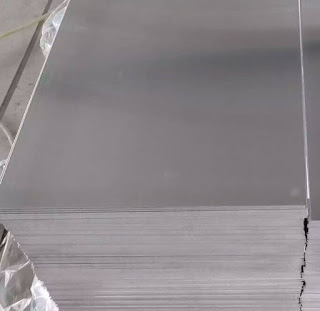Aluminum
alloys are widely used in various applications due to their excellent
properties. Two common aluminum alloys are 5052 and 6061, which have their own
unique compositions and properties. In this article, we will compare the
composition and properties of these two alloys.
Composition:
5052 is an aluminum-magnesium alloy that contains about 2.2-2.8% magnesium,
while 6061 is an aluminum-magnesium-silicon alloy that contains about 0.6-1.2%
magnesium and 0.4-0.8% silicon. Additionally, 6061 contains a small amount of
copper (0.15-0.40%) and zinc (0.25%).
Properties:
1. Corrosion
Resistance: Both 5052 and 6061 have good corrosion resistance, making them
suitable for use in harsh environments. However, 5052 has better resistance to
saltwater and industrial chemical environments.
2. Strength:
6061 has a higher strength-to-weight ratio than 5052, making it suitable for
use in structural applications where strength is important.
3. Formability:
5052 has good formability, but 6061 is more difficult to form due to its higher
strength and hardness.
4. Weldability:
Both alloys have good weldability, but 5052 is easier to weld due to its higher
magnesium content.
5. Machinability:
6061 has better machinability than 5052 due to its lower strength and hardness.
6. Heat
Treatment: 6061 can be heat treated to improve its strength and hardness, while
5052 cannot be heat treated.
Applications:
5052
is commonly used in marine and transportation applications such as boats,
ships, and aircraft, as well as structural and architectural applications such
as building facades, roofs, and panels. It is also used in chemical and food
processing equipment, sheet metal work, electronic components and appliances,
and pressure vessels and tanks.
6061
is commonly used in structural applications such as bridges, buildings, and aircraft,
as well as automotive parts, marine components, and bicycle frames. It is also
used in electrical components, pipes and tubes, and sporting equipment.
In
conclusion, both 5052 and 6061 aluminum alloys offer excellent properties, but
they have some differences in composition, properties, and applications. 5052
is easier to form and is commonly used in marine and transportation
applications, while 6061 is stronger and more commonly used in structural
applications.





Comments :
0 Comments to “Comparing the Composition, Properties, and Applications of Aluminum Alloys 5052 and 6061”
Post a Comment
If you have any questions, concerns, or feedback about our website, our team is always here to assist you.